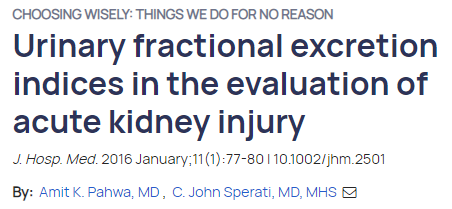After taking a deep dive into AKI management last week, I was left wondering, what is the deal with the FENa?
But what does the evidence show?
(h/t @khanacademy for the great image)

source: pubmed.ncbi.nlm.nih.gov/947239/

source: europepmc.org/article/med/19…
So where does the FENa fail?
source: journalofhospitalmedicine.com/jhospmed/artic…

Lots of things can also through FENa off, including:
1️⃣ Older age
2️⃣ Baseline CKD
3️⃣ Diuretic use

In an oliguric patient with no renal dysfunction at baseline, FENa can help to differentiate prerenal disease and ATN, as long as you keep in mind the confounding situations.




